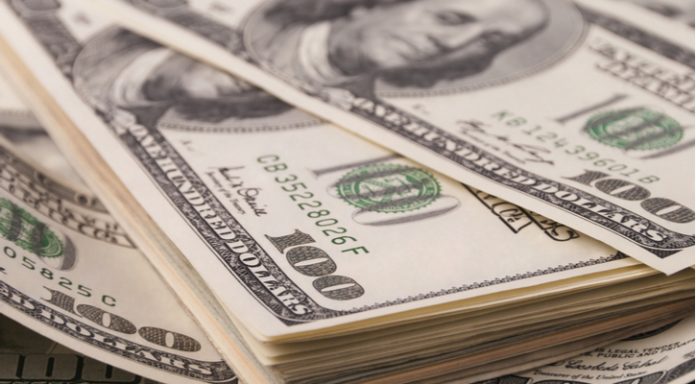Brexit concerns and doubts over the date of the next Bank of England (BoE) rate rise sent the pound lower on Monday. The pound US dollar exchange rate tumbled from a high of US$1.34 to a session low of $1.3295.
| What do these figures mean? |
|---|
|
When measuring the value of a pair of currencies, one set equals 1 unit and the other shows the current equivalent. As the market moves, the amount will vary from minute to minute. For example, it could be written: 1 GBP = 1.28934 USD Here, £1 is equivalent to approximately $1.29. This specifically measures the pound’s worth against the dollar. If the US dollar amount increases in this pairing, it’s positive for the pound. Or, if you were looking at it the other way around: 1 USD = 0.77786 GBP In this example, $1 is equivalent to approximately £0.78. This measures the US dollar’s worth versus the British pound. If the sterling number gets larger, it’s good news for the dollar. |
Even the construction sector remaining resilient in May was insufficient to keep the pound strong in the previous session. The UK construction sector purchasing manager’s index (PMI) remained constant in May at 52.5, slightly above analysts expectations of 52. However, scratching beneath the surface of the numbers, the picture wasn’t quite so rosy. News orders fell and companies were increasingly pessimistic over the outlook of the sector. As result, the pound which would normally rise on stronger than forecast data, actually declined.
| Why does strong economic data boost a country’s currency? |
|---|
| Solid economic indicators point to a strong economy. Strong economies have strong currencies because institutions look to invest in countries where growth prospects are high. These institutions require local currency to invest in the country, thus increasing demand and pushing up the money’s worth. So, when a country or region has good economic news, the value of the currency tends to rise. |
Also keeping the pound out of favour were comments from BoE monetary policy maker Tenreyro as she raised doubts over the timing of the next rate hike by the central bank. Tenreyro said that inflation had fallen quicker than what the BoE had originally anticipated and that whilst they could still be the need for a several rate hikes across the next three years, the timing of the next hike remained questionable. Investors interpreted this as a dovish stance by the central bank, with the possibility of a rate rise in August now looking dubious.
| Why do raised interest rates boost a currency’s value? |
|---|
| Interest rates are key to understanding exchange rate movements. Those who have large sums of money to invest want the highest return on their investments. Higher interest rate environments tend to offer higher yields. So, if the interest rate or at least the interest rate expectation of a country is relatively higher compared to another, then it attracts more foreign capital investment. Large corporations and investors need local currency to invest. More local currency used then boosts the demand of that currency, pushing the value higher. |
Today market participants will turn their attention towards the service sector pmi. Analysts are expecting that the service sector will have rebounded slight more in May, pushing up to 53 from 52.8. Brexit headlines will also be back in focus as Brexit talks begin again.
US Data Back In Focus, Traders Ignore Trade War Fears
Demand for the dollar slipped in early trade as weak data put investors off from buying into the greenback. However, demand picked up again later in the session. Investors were already contending with concerns over a global trade war after trade talks between China and the US broke down over the weekend. This set the dollar off this week on a weaker tone, which was then exaggerated by US Factory orders printing weaker than what analysts had been predicting.
Data will remain in focus today as traders look towards the US ISM non-manufacturing figures. A stronger than expected reading could help the dollar with another step higher.
|
This article was initially published on TransferWise.com from the same author. The content at Currency Live is the sole opinion of the authors and in no way reflects the views of TransferWise Inc. |





